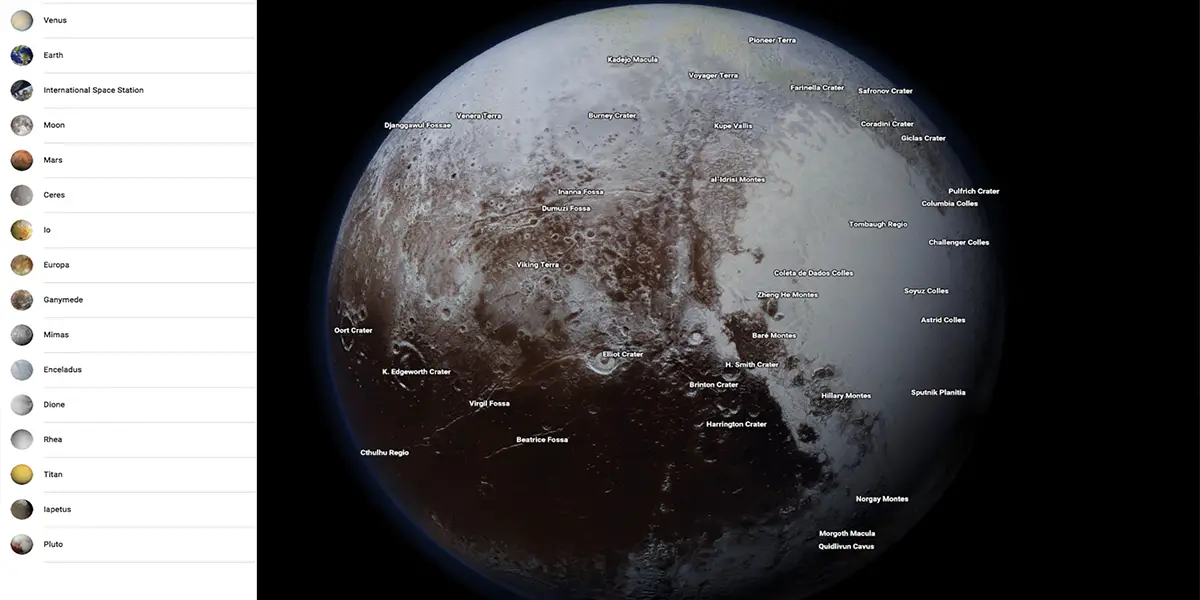It’s Now Possible To Explore Other Moons And Planets Using Google Maps
Tags: opinion

By Amanda Froelich Truth Theory
If you’re eager to explore new planets and moons in space — you’re in luck. While we can’t connect you with a spaceship and a pilot (just yet), engineers working at Google just unveiled the next best thing. Using a new feature on Google Maps, it is now possible to explore planets such as Venus, Mercury, and Pluto, in addition to several icy moons in our solar system.
The new feature (see here) allows you to navigate between various celestial bodies, rotating and zooming between the planets and moons. Reportedly, the project was inspired by the Cassini spacecraft which delivered hundreds of thousands of pictures. As Newsweek reports, the images revealed entirely new views of Jupiter, Saturn and their moons.
Google explains: “Twenty years ago, the spacecraft Cassini launched from Cape Canaveral on a journey to uncover the secrets of Saturn and its many moons. During its mission, Cassini recorded and sent nearly half a million pictures back to Earth, allowing scientists to reconstruct these distant worlds in unprecedented detail. Now you can visit these places-along with many other planets and moons-in Google Maps right from your computer.”
Because there is not yet a search feature, navigating can prove somewhat tricky. On the other hand, the lack of a search option allows you to scroll through the solar system on your own — which might prove exciting. Astronomical artist Björn Jónsson worked with Google to bring the images to life.
In addition to exploring Jupiter and Saturn, you can now check out Ceres, Io, Europa, Ganymede and Mimas (frozen moons which are most likely to host extraterrestrial life). The older version of Google Maps allowed users to see the Earth, the Moon, Mars, Mercury and the International Space Station; these will remain visible.
The Google press release reads, “Explore the icy plains of Enceladus, where Cassini discovered water beneath the moon’s crust-suggesting signs of life. Peer beneath the thick clouds of Titan to see methane lakes. Inspect the massive crater of Mimas-while it might seem like a sci-fi look-a-like, it is a moon, not a space station.”
Though there are some bugs that still need to be worked out, all in all, it’s a neat feature that may satiate adventurers’ ambition to explore our solar system. The new Google Maps may also serve as a valuable educational tool as humanity moves forward and develops technology to visit these planets and moons first-hand.
Read more: Electrons Have Been Recorded Whistling In Space Here Is How They Sound
Image Credit: Google Maps
I am Luke Miller, content manager at Truth Theory and creator of Potential For Change. I like to blend psychology and spirituality to help you create more happiness in your life.Grab a copy of my free 33 Page Illustrated eBook- Psychology Meets Spirituality- Secrets To A Supercharged Life You Control Here
Leave Comment: